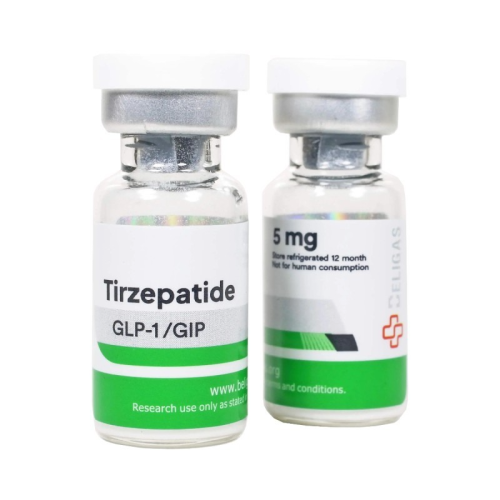ACTIVE HALF-LIFE
5 days
CLASSIFICATION
Dual GIP and GLP-1 Receptor Agonist
MANUFACTURER
Beligas - US
WAREHOUSE
USA Warehouse 2
SUBSTANCE
GIP/GLP-1 RA
,
Tirzepatide is a man-made peptide that reduces glucose levels. It functions by promoting both the initial and secondary phases of insulin release while lowering glucagon levels, all in a way that depends on glucose presence.
In patients with type 2 diabetes, tirzepatide has demonstrated its ability to slow gastric emptying, decrease both fasting and post-meal glucose levels, reduce appetite, and lead to weight loss. Additionally, it can enhance insulin sensitivity.
The structure of the peptide includes a C20 fatty diacid component linked through a hydrophilic connection at the lysine residue at position 20, resulting in a strong binding to albumin in the blood, which extends its duration of action.
Glucagon-like peptide-1 (GLP-1) receptors (GLP-1R) are found throughout the body, including in pancreatic beta-cells and the gastrointestinal system. These receptors play a role in the development of type II diabetes mellitus, as GLP-1R signaling aids glucose regulation by promoting insulin release in response to glucose, slowing gastric emptying, lowering glucagon levels in the blood, and activating pathways in the brain that suppress appetite. Alongside this, glucose-dependent insulinotropic polypeptide (GIP) and GLP-1 are hormones that help maintain glucose balance by encouraging insulin secretion from pancreatic beta-cells; however, GIP is the primary incretin hormone that triggers insulin release when food is consumed.
The specific way in which tirzepatide works is not completely understood; nevertheless, its dual action on GIP and GLP-1R may play a significant role in its ability to control blood sugar and weight. Research indicates that using GIP along with a GLP-1R agonist leads to a greater insulin response and reduced glucagon secretion than administering each hormone separately. Tirzepatide binds with high affinity to both GIP and GLP-1R. In laboratory settings, it shows a binding affinity to GIP receptors similar to that of natural GIP, while its affinity for GLP-1R is five times lower than that of native GLP-1. Tirzepatide effectively activates the GLP-1R signaling pathway to stimulate insulin release in response to glucose through its interaction with either the GIP receptor (GIPR) or the GLP-1R. However, the implications of GIPR activation in the drug's mechanism of action require more study, as evidence concerning the impact of GIPR stimulation on blood glucose and weight management in both preclinical and clinical settings varies.

